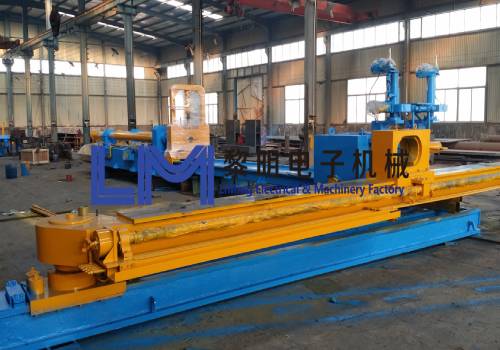Pipes and pipe bending tools are used for rolling racks, gates, handrails, and various sheet metal manufacturing projects in the construction of manufacturing plants and production units. There are different types of bending tools with different specifications. Hydraulic pipe benders are mainly used in the automotive and machinery industries. This device is made of high-grade steel and is used for rolling cages, handrails, etc.

Pipe Benders
Electro-hydraulic pipe benders and Pipe Benders have large requirements for pipe diameter and wall thickness, and are suitable for high-power and high-precision operating angles. There are smaller and larger models, many of which can be used in smaller workshops. Before the hydraulic pipe bender is put into use, it is very important to understand its working principle. In this article, we will take you through the pipe bending process and teach you all the things you need to pay attention to during the operation.
Before each use, check your Hydraulic Pipe Bender and repair any problems to reduce the risk of serious electric shock injuries, collapse accidents, etc., and avoid damage to the machine. Clean blood, grease or dirt on hydraulic pipe bending machines, such as handles and control devices. This can better control the hydraulic pipe bender and prevent the hydraulic pipe bender or the controller from sliding out of the support during use. Check the hydraulic pipe bender for hydraulic leakage. Check the hydraulic oil level, adjust if necessary, and check for broken, cracked, bent, missing or stitched parts, and other conditions that may hinder the safe operation of the hydraulic bending machine, such as cracks in the corner bracket. Make sure that the power cord and plug are in good condition without any problems. In the hydraulic inspection of the pipe bender, if a problem is found, it shall be used after the problem is corrected.
Make sure that your hydraulic pipe bender and work area are set up correctly, without onlookers and other interference. The on/off switch should initially be in the off position. If necessary, mark the pipe to be bent at the appropriate location and open the upper bending frame.
Choose the appropriate bending form for the pipe to be bent. The size and catalog number of the table are marked on the table. Put the former at the end of the ram.
First put the pipe to be bent in the front, and if necessary, place a bracket under the pipe to keep it in the correct bending position. The first character contains the character to be aligned in the middle. Properly support the pipeline to prevent the pipeline and hydraulic pipe bender from tipping over during use.
Be sure to apply some grease on the side of the corner bracket that is in contact with the pipe. Place the bracket in the corresponding hole marked on the curved frame. The corner bracket must be in the correct and symmetrical hole, otherwise the hydraulic pipe bender may be damaged during use.
Finally, all you need to do is to close the curved frame and fully insert the support pins at the corners through the curved frame wings. Align the angle brackets so that the angle indicator on the zero mark matches the top wing on the mark. The open-wing hydraulic pipe bender has no angle indicator. Make sure that the pin is fully inserted into the lower blade. Ensure that the hydraulic pipe bender and the pipe are stable.
Stand next to the cylinder, on the same side as the release knob. When the hydraulic pipe bender is running, do not stretch your hands above the pipe bender. Move the ram forward. When the bending template touches the tube, move the slider slowly and carefully so that the bend is aligned first. Continue to move the actuator until the tube is exactly opposite the corner bracket. Do not place fingers, hands or other parts of the body where they might be pinched or pinched. Make sure that the corner bracket is in the correct position and the elbow and pin are fully inserted into the frame. Otherwise, the hydraulic pipe bender may be damaged during use. Make sure that both ends of the pipe extend over the corner bracket to prevent the pipe from slipping when bent. Continue to move the cylinder and bend the pipe. Keep away from moving pipes. Pay attention to the angle indicator. The average of the angles measured by each angle indicator is the approximate total angular deflection. Observe the swelling of the ram. If you can see a small groove in the cylinder, stop the movement in the cylinder to prevent hydraulic leakage and damage the cylinder
The company also provides Hot Elbow Machines, please feel free to contact us if necessary
TEL:008613931703233
Fax : 0086-317-6817833
Email:lmdzjxc@lmdzjxc.com
Address:Xiwang New District ,Mengcun Hui Autonomous County, Hebei province,China. sitemap google